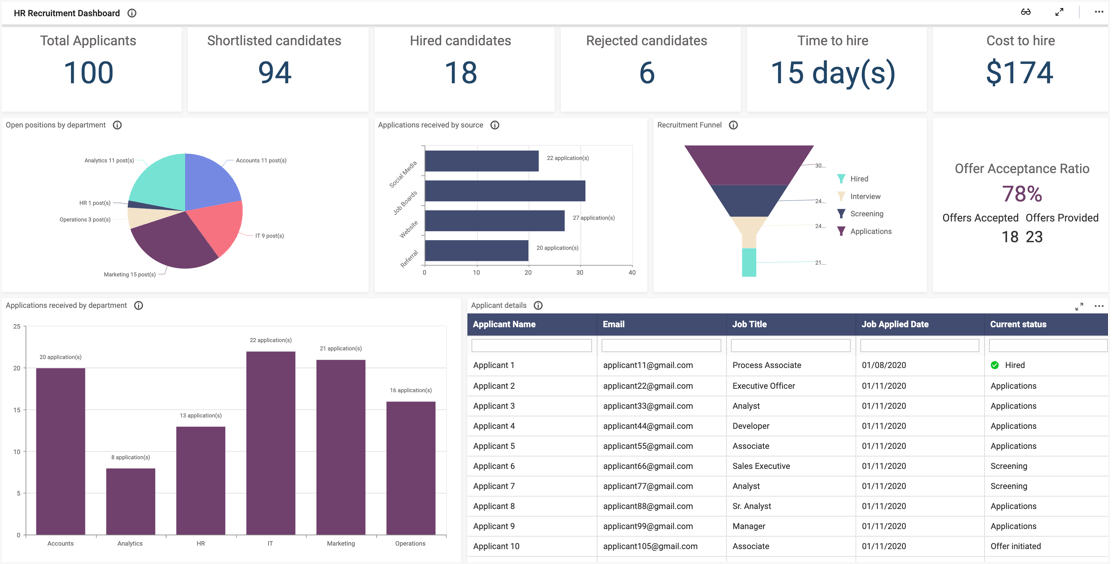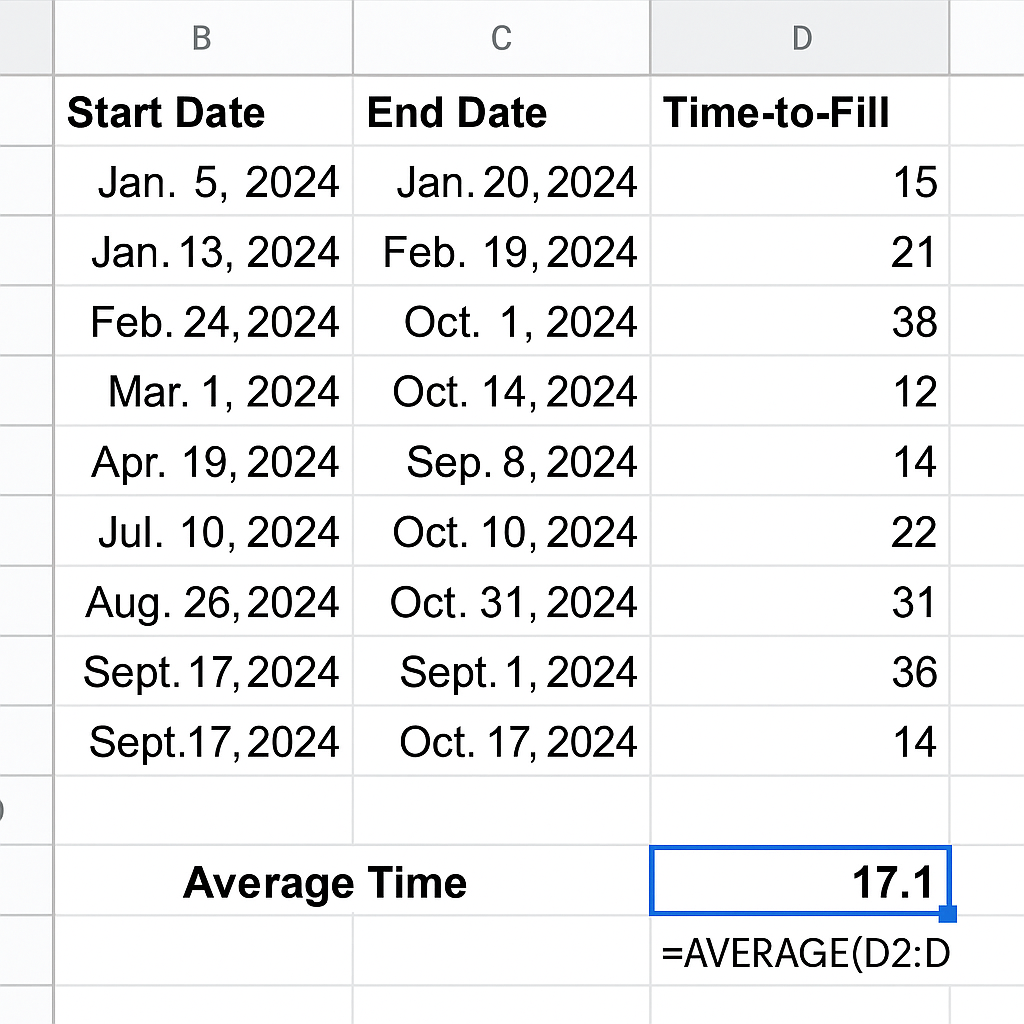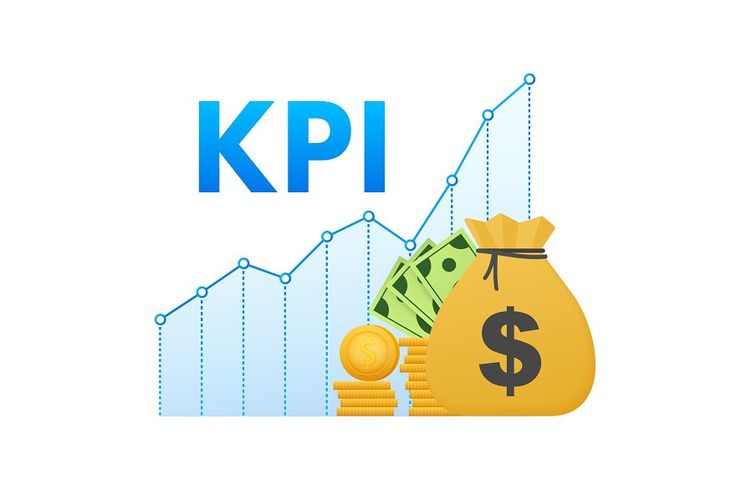HR analytics dashboards, when powered by the right Key Performance Indicators (KPIs), can serve as the compass guiding data-driven HR decisions and business growth. Today, modern businesses thrive on data, and HR is no exception. Hiring by gut, promoting based on loyalty, or judging performance from memory may have kept your SME afloat — but it won’t sustain you in the analytics era.
With analytics, Nigerian SMEs now have the tools to transform scattered HR data into clear, actionable intelligence. However, the outcome depends on choosing the right HR metrics in Nigeria — the ones that connect people decisions directly to business results such as faster hiring, smarter spending, higher retention, and stronger compliance. But with so many indicators to track, which KPIs should you prioritize to stay ahead?
Here’s a closer look at the must-have HR KPIs every Nigeria-based SME should include on its dashboard. To put these metrics in perspective, it’s important to first understand how an HR Analytics Dashboard actually works.
What is HR Analytics Dashboard?
An HR analytics dashboard is a smart digital tool that brings your workforce data together — from recruitment and turnover to training and performance — in one organized view. Instead of working with spreadsheets or paper files, it gives HR teams a real-time picture of what’s working, what’s not, and where to act next. With clear visuals and up-to-date insights, business leaders can make faster, evidence-based decisions that directly impact growth.
In Nigeria, SMEs can build effective dashboards without complex or expensive systems. Tools like Excel, Google Sheets, Zoho People, or NotchHR can easily power simple dashboards that track the most important HR metrics in Nigeria. The real impact of a dashboard is in the quality of capturing accurate data and focusing on KPIs that reflect performance, engagement, and compliance. When used to its full potential, it becomes the lens through which HR understands people, performance, and progress.

Core KPI Categories Every Nigerian SME Should Track
To build a truly data-driven HR function, Nigerian SMEs must track performance across the right set of indicators. In line with CIPM Nigeria, HR analytics should move beyond headcounts and attendance reports — focusing instead on metrics that reflect people, productivity, and profitability.
Below are the essential HR KPIs every SME should include in their analytics dashboards, grouped into four strategic categories that help leaders make informed, evidence-based decisions.
1. Recruitment Efficiency KPIs — Attracting the Right Talent Fast
Recruiting the right people quickly and cost-effectively remains one of the biggest challenges for Nigerian SMEs. According to CIPM Nigeria, effective hiring requires consistent measurement of recruitment KPIs to identify what works and where to improve. Tracking these metrics helps teams shorten hiring cycles, reduce costs, and attract better talent.
Key recruitment metrics to track:
- Time-to-fill: Measures the number of days between job posting and offer acceptance. (Track monthly and compare by role to identify delays.)
- Cost-per-hire: Total recruitment cost ÷ number of hires. (Include ads, agency fees, referrals, and manager time for a full picture.)
- Offer acceptance rate: Offers accepted ÷ offers made. (Low acceptance may signal pay gaps or weak employer branding.)
- Source-of-hire efficiency: Identifies which platforms — LinkedIn, Jobberman, or referrals — deliver quality hires. (Helps allocate budget effectively.)
When measured consistently, these KPIs align with CIPM’s recruitment best practices, ensuring faster and smarter hiring decisions.
2. Retention & Engagement KPIs — Keeping Your Best People
Nigeria continues to experience high employee turnover across sectors like tech, finance, and retail. CIPM Nigeria emphasizes that retention and engagement metrics provide valuable insight into whether culture, leadership, or compensation is strengthening — or weakening — employee loyalty.
Key retention and engagement metrics to track:
- Voluntary turnover rate: The percentage of employees who resign voluntarily. (Segment by department or role to pinpoint problem areas.)
- First-year attrition: Tracks employees who leave within their first 12 months. (Highlights onboarding or cultural fit issues.)
- Employee Net Promoter Score (eNPS): A simple survey that gauges how likely employees are to recommend your company. (Run quarterly to monitor engagement trends.)
- Internal promotion rate: The percentage of roles filled internally. (Demonstrates strong talent development and retention culture.)
Retention isn’t just about preventing exits — it’s about building an environment where people want to stay, a principle CIPM identifies as key to sustainable HR practice.
3. Productivity & Performance KPIs — Linking HR to Profitability
For HR to be seen as a strategic partner, it must demonstrate measurable business impact. CIPM guidelines recommend aligning people performance metrics with organizational outcomes to strengthen HR’s influence at the decision-making table.
Key productivity and performance metrics to track:
- Revenue per employee: Total revenue (T12) ÷ average headcount. (Reveals workforce productivity and efficiency.)
- Performance rating distribution: Percentage of employees exceeding, meeting, or below expectations. (Ensures fairness and identifies high performers.)
- Time-to-productivity: Number of days it takes new hires to reach full effectiveness. (Faster onboarding improves ROI on talent investment.)
Tracking these KPIs empowers Nigerian SMEs to align workforce output with profitability and long-term business goals — a standard CIPM framework for strategic HR management.
4. Cost & Compliance KPIs — Protecting Against Hidden Risks
Labour costs and compliance failures can quietly undermine profitability. Monitoring cost and compliance KPIs, as advised by CIPM Nigeria, ensures HR teams maintain financial discipline while avoiding penalties under Nigeria’s labour laws.
Key cost and complaince metrics to track:
- Overtime hours/costs: Measures total overtime pay and hours worked. (Prevents burnout and wage inflation.)
- HR cost per employee: Total HR operating cost ÷ number of employees. (Provides a benchmark for HR cost efficiency.)
- Compliance accuracy rate: Percentage of payroll and statutory submissions completed accurately and on time. (Reduces risks tied to pensions, PAYE, and local regulations.)
These KPIs align with CIPM Nigeria’s strategic HR competency framework, emphasizing evidence-based decision-making and measurable business impact.
How Nigerian SMEs Can Build HR Analytics Dashboard
Building an HR dashboard doesn’t have to be complex or expensive. The actual requisite to start small. An effective HR Analytics Dashboard focus on five to seven essential KPIs that directly align with your business goals and are easy to maintain.
- Start with simple tools: You don’t need enterprise software to begin. Excel or Google Sheets can provide powerful insights when used correctly.
- Ensure data quality and privacy: Collect consistent, up-to-date data from reliable sources — and safeguard employee information in line with the Nigeria Data Protection Regulation (NDPR).
- Assign ownership: Designate a specific HR data owner responsible for data accuracy, updates, and governance to ensure accountability.
- Choose scalable tools: As your SME grows, transition to cloud-based HR platforms like NotchHR, Zoho People, or OrangeHRM to automate tracking and visualization.
- Segment dashboards: Create tailored dashboard views for HR, management, and finance teams so each group sees what’s most relevant to their decisions.
- Demonstrate ROI: Present KPI trends to leadership quarterly. Show how HR data links to profit, retention, and performance improvement to position HR as a revenue enabler — not just an administrative function.
Practical Example: Calculating Time-to-fill in Excel
To make your dashboard actionable, start by tracking Time-to-fill as one of the most essential recruitment metrics. It measures how many days it takes to hire after a job opening is posted. You can easily calculate Time-to-fill in Excel using basic formulas without complex software.
Excel: Time-to-Fill
1. Calculate for each role
If Start Date is in B and End Date in C:
=C2-B2
Drag down for all roles.
2. Average Time-to-Fill
=AVERAGE(D2:D20)
Tip (exclude weekends/holidays):
=NETWORKDAYS(B2, C2)
Format result as Number if it shows a date.

Figure: Excel-based HR dashboard illustration demonstrating how to calculate and visualize Time-to-Fill. A foundational step for building evidence-based HR decisions and linking people metrics to SME growth outcomes.
Decoding HR Analytics: A Strategic Perspective for Nigerian SMEs
This practical insight equips Nigerian SMEs with practical, evidence-based insights into HR analytics, shifting HR from routine administration into a strategic driver of growth. Using local data and proven methods, we focus on four KPIs that can transform HR practices.
1. KPI: Employee Turnover Rate
- Challenge: High turnover disrupts operations and inflates recruitment and training costs. According to a 2025 report from Efficentra, Nigerian SMEs with poor workplace cultures experience 40% higher turnover than those with strong cultures.
- Analytical Approach: Use predictive analytics on historical exit data and NLP-driven sentiment analysis from exit surveys to identify at-risk employees.
- Benefit: Enables targeted retention initiatives, reducing turnover and preserving critical talent.
2. KPI: Time-to-Fill
- Challenge: Prolonged hiring processes lead to loss of candidates and operational delays.
- Analytical Approach: Analyze the recruitment funnel to identify delays and benchmark across roles or teams.
- Benefit: Speeds hiring, ensuring essential positions are filled promptly to maintain productivity.
3. KPI: Employee Engagement Score
- Challenge: Low engagement impacts, morale and productivity.
- Analytical Approach: Conduct pulse surveys on work-life balance and leadership support, correlating results with performance metrics.
- Benefit: Guides targeted interventions to boost motivation, strengthen culture, and reduce churn.
4. KPI: Revenue per Employee
- Challenge: Misaligned workforce contributions can hinder growth.
- Analytical Approach: Calculate revenue per employee and assess training ROI by department.
- Benefit: Supports strategic HR investments that maximize workforce impact on business outcomes.
By focusing on these KPIs, Nigerian SMEs can harness HR analytics to drive growth, improve retention, and build a high-performance workplace.
Backed by research on Nigerian SMEs and HRIS adoption, these KPIs provide a validated roadmap for workforce optimization tailored to Nigeria’s business landscape. This concise, evidence-based framework empowers SMEs to make confident, data-driven HR decisions that drive performance and growth.
Overcoming Challenges in Adopting HR Analytics in Nigerian SMEs
Implementing HR analytics in Nigerian SMEs presents challenges, but they can be effectively managed with these structured, step-by-step approach:
- Poor data culture: Begin with a standardized HR data template (employee, hire date, role, department, salary, status, exit date) to ensure accurate, consistent, and timely data collection. Encourage team buy-in to reinforce disciplined data entry practices.
- Limited analytics skills: Build internal expertise through CIPM Nigeria programs, AIHR HR analytics courses, or short online HR data literacy bootcamps. Remember that developing analytics capability is ongoing, requiring consistent practice and practical application.
- Tight budgets: Start with free tools such as Google Sheets or Power BI Desktop. Focus on tracking a single KPI initially to demonstrate short-term ROI within three months before scaling to additional metrics or software investments.
- Implementation roadmap: Standardize HR data → create basic dashboards → pilot one KPI → measure short-term impact and ROI → scale gradually.
With a structured approach and gradual adoption, HR analytics becomes a high-impact, data-driven investment, enabling Nigerian SMEs to optimize workforce performance, enhance employee retention, and drive sustainable business growth—even within constrained budgets and limited infrastructure.
Conclusion: The Future-Proof Nigerian SME Is Data-Driven
The future of Nigerian business belongs to data-driven SMEs that leverage HR analytics to make informed decisions. By tracking the right KPIs—such as employee turnover, time-to-fill, engagement scores, and revenue per employee—HR can evolve from a traditional cost center into a strategic growth engine.
A well-designed HR analytics dashboard allows SMEs to visualize key metrics in real time, uncover insights, and make decisions backed by evidence rather than intuition. By integrating an HR analytics dashboard into your HR strategy, Nigerian SMEs can transform people data into actionable insights, driving sustainable growth, stronger employee engagement, and long-term business resilience.


